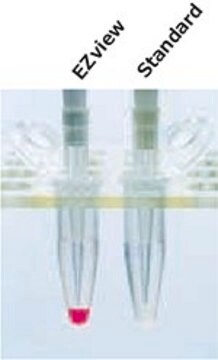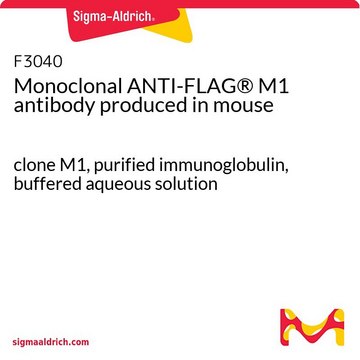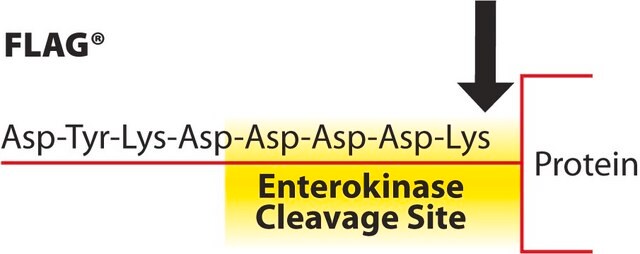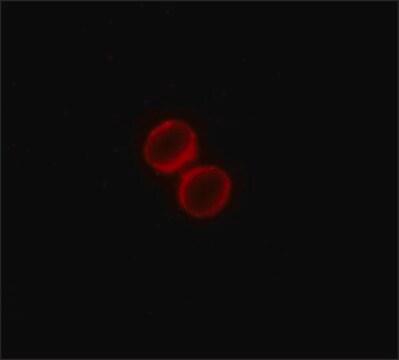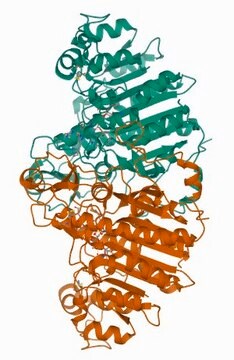A4596
ANTI-FLAG® M1 Agarose Affinity Gel
Sinônimo(s):
Anti-ddddk, Anti-dykddddk
About This Item
Produtos recomendados
conjugado
agarose conjugate
tipo de produto de anticorpo
primary antibodies
forma
suspension
Isotipo
IgG12b
capacidade
≥0.6 mg/mL, gel binding capacity
temperatura de armazenamento
−20°C
Descrição geral
Especificidade
N-Asp-Tyr-Lys-Asp-Asp-Asp-Asp-Lys-C
Aplicação
Affinity gel is for calcium mediated purification of N-terminal FLAG fusion proteins.
immunoprecipitation (IP): suitable
Elution - FLAG peptide, Glycine, pH 3.5 EDTA
Learn more product details in our FLAG® application portal.
Características e benefícios
- Typically purify fusion proteins from crude lysates to single band purity in just one chromatography step.
- Fusion protein may be eluted from affinity resin by mild elution with EDTA.
- A solution of FLAG peptide can be used for gentle, non-denaturing elution of FLAG fusion proteins.
forma física
Outras notas
Informações legais
Não está encontrando o produto certo?
Experimente o nosso Ferramenta de seleção de produtos.
produto relacionado
Código de classe de armazenamento
10 - Combustible liquids
Classe de risco de água (WGK)
WGK 3
Ponto de fulgor (°F)
Not applicable
Ponto de fulgor (°C)
Not applicable
Certificados de análise (COA)
Busque Certificados de análise (COA) digitando o Número do Lote do produto. Os números de lote e remessa podem ser encontrados no rótulo de um produto após a palavra “Lot” ou “Batch”.
Já possui este produto?
Encontre a documentação dos produtos que você adquiriu recentemente na biblioteca de documentos.
Os clientes também visualizaram
Conteúdo relacionado
Protein purification techniques, reagents, and protocols for purifying recombinant proteins using methods including, ion-exchange, size-exclusion, and protein affinity chromatography.
Protein expression technologies for expressing recombinant proteins in E. coli, insect, yeast, and mammalian expression systems for fundamental research and the support of therapeutics and vaccine production.
Nossa equipe de cientistas tem experiência em todas as áreas de pesquisa, incluindo Life Sciences, ciência de materiais, síntese química, cromatografia, química analítica e muitas outras.
Entre em contato com a assistência técnica

